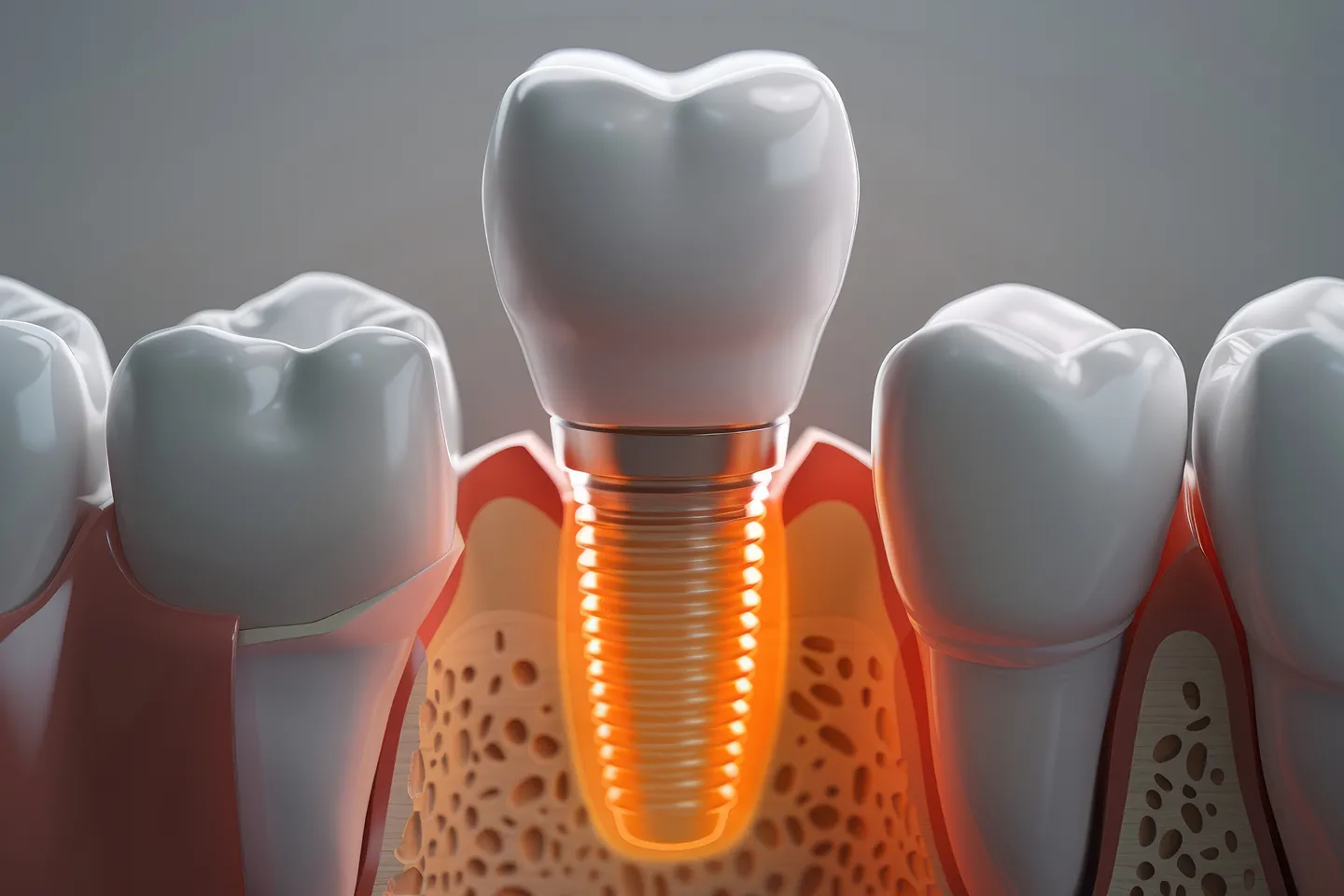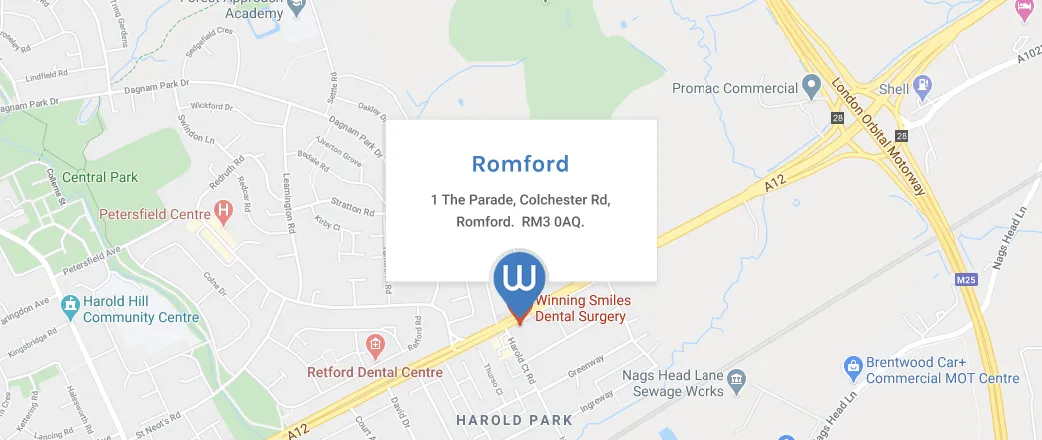What Do We Do At Winning Smiles When Your Dental Implants Fitted By Us Go Wrong?
Firstly, we need to define ‘when things go wrong’. Generally, dental implants go wrong in the first few weeks of fitting (Early Failure/Integration failure/Failure to integrate/Osseointegration/acute infection/implant rejection)
OR
2,3,4,5….20 years after fitting (Long Term Failure, Peri-implantitis, Bone loss, Fracture of superstructures (bridges/crowns/abutments/dentures/overdentures/chronic infection)
Early Failure (Patients Sometimes Call This Implant Rejection)
This is where the implant (titanium screw/fixture) is inserted into the jawbone by the dentist or implantologist, and when they check the implant two weeks later, it is loose and painful – at this point, the bone around the implant has failed to make contact with the titanium surface and the implant is not going to firm up or ‘take’ in the usual way.
The implant has failed to integrate (or osseointegrate) and will be removed and discarded.
Normally, the bone will heal around the hole left by the failed fixture and a new titanium implant/screw/fixture can be placed 6–16 weeks later. Sometimes, additional procedures may be required to improve the chance of success for the second bite of the cherry, e.g. bone grafting.
This may involve grafting or simply burying the implant and leaving it for a longer period before inspecting it again (up to six months).
What We Do If You Suffer An Early Implant Failure
If your implant fails to integrate here at Winning Smiles, we have a free replacement policy. If you would rather not take the risk of it happening again, or wish not to go ahead with surgery a second time, we will refund you the cost of the implant surgery for that implant that has failed.
Late Failure
A late failure occurs sometime after the implant has successfully integrated – i.e., any time after the teeth (crown/bridge/denture) have been connected to your implants.
Usually, the teeth are connected 3–6 months after implant surgery, or in cases where immediate implant treatment has been performed, any time after the immediate implant treatment is completed.
Most late failures occur 5–10 years after implant placement, and conditions in the mouth usually dictate how long implants will survive prior to failure. Most failures occur due to the bone slowly shrinking around the implant and creating a larger and larger crater around the fixture until the implant breaks away from the bone because only a millimetre or two of bone is left holding it in. Many implants fail this way, but whether that bone loss happens within five years or twenty years is of great importance to the patient!
Factors That Accelerate Peri-Implant Bone Loss:
- Smoking
- Poor Oral Hygiene
- Failing to attend regular hygienist sessions, inspection and maintenance by the dentist
- Diabetes
- Another failure we rarely see is where an implant fractures or snaps due to a very strong bite (occlusal overload)
What We Do If You Suffer A Later Implant Failure
If your implant suffers severe peri-implantitis and fails or has to be removed due to recurrent infections some years after fitting, we will replace it free of charge within the first five years after fitting, provided you are a non-smoker, maintain good oral hygiene and have been seeing our hygienists regularly (every three to six months) and attending your dentist at Winning Smiles every six months for a check-up.
P.S. Sometimes we see fractures of the implant crown, bridge or implant denture. This is different from the titanium screw in the jawbone failing. Usually, the implants in the jaw are fine in these situations, but the tooth or teeth attached to them have failed due to long-term wear and tear or sudden breakage. Generally, we guarantee our ceramic/porcelain/zirconia/
PFM crowns and bridges for five years (any failure of these will be replaced free of charge within five years of fitting, as long as there is no accident involved). Our acrylic dentures and bridges are guaranteed to last for two years, as they are weaker and more prone to breaking.
Often, a small chip can be smoothed down without the need to replace the crown, bridge or denture in its entirety (as long as the chip is not showing when a patient smiles).
For large chips or those that show, we can often repair them invisibly – although your crown/bridge/denture may need to go away for a few days for the lab to work on them – in this instance, a temporary replacement is provided.






.webp)
